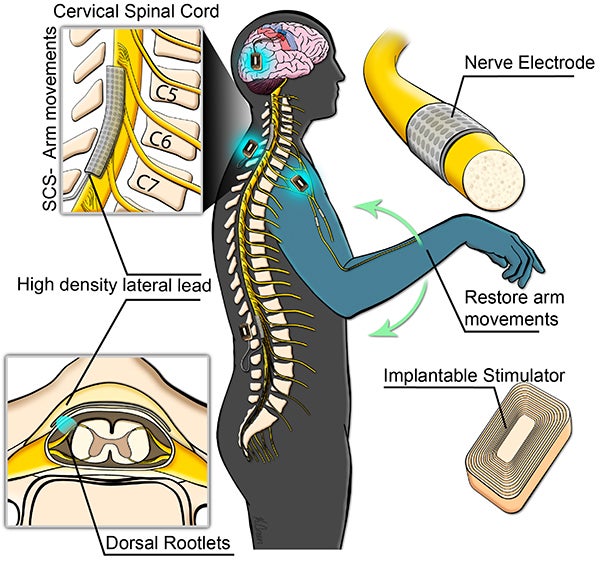

The SCS trial The day of your arrival to hospital Of course the placebo effect (trial being positive for poorly understood reasons) cannot be excluded. A genuinely successful trial predicts similar relief from a subsequent permanent device in the short-term but does not guarantee it in the long-term. This same lead can then be attached to an implanted IPG minimising discrepancy between the trial and permanent SCS sensation. At your consultant’s discretion, they may offer to internally secure a percutaneous wire/lead or surgically place a flat paddle lead to be connected to an external trial unit for a period. The reason for a SCS trialĪ low risk trial of SCS is usually carried out before considering a permanent implant (the latter poses rare but significant risks) because despite careful assessment and selection, not every person feels the same degree of pain relief, initially or in the longer term. Your case may be referred for further discussion among the wider multidisciplinary team so your doctor can hear other’s views regarding the suitability of this treatment or any other management options for you. The assessment team may recommend additional treatments to your doctor so as to optimise your chances of success from SCS or minimise any risks from this treatment or suggest alternatives. They will be able to answer your questions or reassure you about any concerns you may have and will provide further education and information around SCS. A specialist team experienced in all manner of pain management carries out a comprehensive assessment of your pain and its effect on your day-to-day life. You will have been reviewed by one of the pain doctors or neurosurgeons for initial assessment regarding suitability of SCS and then referred for this detailed assessment. About the multidisciplinary assessment prior to trial The Walton Centre has implanted stimulators for over 35 years. It offers no cure but can offer people with neuropathic pain a degree of relief that enables them to become more active, enjoy better sleep and possibly reduce their pain medications. We believe SCS recruits natural pain relieving mechanisms at a spinal cord level and via longer pathways which stimulate pain relieving centres in the brain. In 1971 the first SCS was implanted delivering low-voltage electrical currents to the back of the spinal cord where the ‘spinal pain gates’ lie, providing pain relief. Naturally occurring electricity has been used to treat pain for thousands of years. Introduction to spinal cord stimulation (SCS) About SCS Neuropathic pain is a type of unhelpful chronic pain originating in the nervous system and often resistant to conventional treatment (including medications and good pain management skills) but can be eased by spinal cord stimulation (SCS). The natural analgesic centres in the brain, which thrives on upbeat messages, wane. Consequent tiredness, boredom, depression and worry make the pain even harder to cope with. Misdirected problem-solving (poor pain management skills) can develop, leading to further distress and physical disability. Unless rationale and positive thoughts and behaviours (good pain management skills) are adopted, the healed tissue remains sensitised, which fuels this on-going unhelpful pain mechanism. When faced with on-going signals in pain pathways, the brain assumes they are a threat and a sign of on-going injury and so a person adopts protective behaviours. About chronic painĬhronic pain is unhelpful as it is both unpleasant and exists even when harm or damage is excluded by various tests including medical assessment.
/Precision_PLUS_IPG_940x940-5a22ba107bb2830019b777b1.png)
However, for reasons not yet fully understood, pain can continue beyond the expected healing time, despite efforts to relieve it. Slow dull pain is felt afterwards and serves to promote protective behaviours to enable healing to complete. About acute painįast sharp pain is felt during stimulus or injury. It then forwards impulses to other areas of the brain with the purpose of taking immediate action and making sense of them. The brain then recognises these impulses and categorises them as painful and does it’s best to judge their origin.

Pain impulses travel from the point of origin along pain pathways into the spinal cord and then to the brain. Introduction to pain About pain transmission


 0 kommentar(er)
0 kommentar(er)
